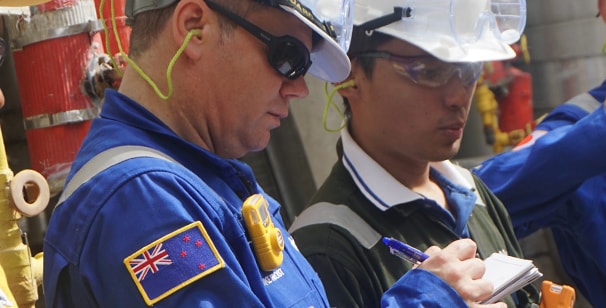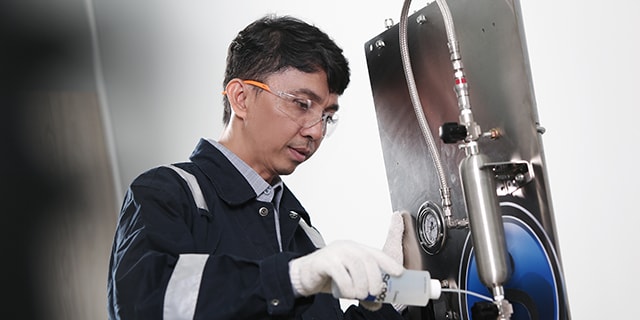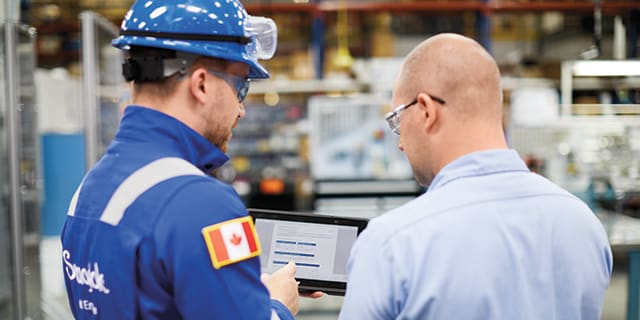Analyzing Your Sampling Needs

Grab Sampling vs. Online Analyzers: Which is Right for You?

The traditional method of grab sampling—also called spot sampling, field sampling, or just sampling—has long been effective in a wide variety of applications. It involves installing one or several grab sample panels near the process an operator wishes to monitor. Samples are typically collected in bottles or cylinders, depending on the process, and brought to a central laboratory for analysis.

Which option is best? Your decision to utilize grab sampling methods or to construct an analyzer shelter for real-time monitoring may not be straightforward. Your plant is unique, and there are many factors to consider.
We’ve collected some of the most prominent considerations in the below checklist to help you analyze your sampling needs:
| Condition: | Grab Sampling | Online Analyzer | Analysis: |
| Plant floor space is limited. |  |
Online analyzers are sensitive and are therefore usually housed in an appropriate shelter where ambient environmental conditions are tightly controlled. That shelter requires significant real estate; if you do not have it, grab sampling panels can be installed in smaller spaces. | |
| Budget is limited. |  |
Online analyzers can represent a significantly larger investment than grab sampling panels. In addition to construction of the shelter itself, online analyzers require sophisticated sample conditioning systems to prepare the sample for analysis. This investment may be merited based on additional conditions. | |
| Process involves hazardous materials and human exposure should be limited. |  |
Sample collection from a panel involves an operator manually collecting media in a bottle or cylinder. While good grab sampling system design can help mitigate safety risks, an analyzer reduces the need for regular contact. Keep in mind that periodic grab sampling will still be required to validate an online analyzer’s results. | |
| Fluid system is large, and samples must be taken from multiple points. |  |
Due to their small size, grab sample panels can be installed near the sample tap. Online analyzers require routing tubing from the process line to where the analyzer is located. If your applications require samples be taken from points that are located far distances apart, try installing grab sampling panels at each point rather than routing long lengths of tubing to an analyzer. | |
| Sample purity is a high priority. |  |
 |
Contamination risks are inherent to each method but take different forms. If sampling several different processes, grab sample cylinders must be thoroughly cleaned to prevent cross-contamination. Meanwhile, if an online analyzer is analyzing two different process streams, a stream selection device must be properly incorporated to avoid the same problem. Good system design and adherence to best practices can help reduce contamination potential in both applications. |
| Time delay must be kept to a minimum. |  |
One of an online analyzer’s biggest advantages is its ability to analyze sample conditions in real time—often within under a minute from being taken from the main process. This is advantageous for delicate system media that may quickly change phase or otherwise become compromised after being drawn from the process. | |
| Process rate of change is very slow. |  |
In grab sampling applications, it may take up to 24 hours for a sample drawn from a panel to be analyzed in the lab. If your process fluid changes quickly, an analyzer may be advantageous. If your process fluid’s rate of change is very slow, however, grab sampling may not be a hindrance. | |
| Maintaining sample temperature is a high priority. |  |
If it is essential to keep your samples as close to the process temperature as possible, an online analyzer provides significant advantages. Tubing that routes the sample to the analyzer can be heat traced to effectively maintain sample temperature. Maintaining the sample at process temperature is more difficult for grab sampling operations. No comparable method is available to maintain sample temperature inside cylinders. | |
| Field atmospheric conditions are variable. |  |
 |
If your fluid system is operating in an environment where atmospheric conditions change significantly and frequently, a few things should be considered. Grab sampling can be a convenient option here, allowing samples to be analyzed in a carefully controlled laboratory environment. Comparatively, while an analyzer shelter will require an HVAC system, it will save technicians the trouble of obtaining samples in rain, snow, intense heat, or other undesirable conditions. |
| The process being sampled has a heavy particulate load. |  |
Online analyzers require filtration as part of their conditioning systems to avoid clogging and ensure accuracy of results. If your process has a lot of solid particulate, maintaining the proper filtration levels may become challenging. If this is the case, grab sampling may be the better option. |

To further explore the criteria that may affect your decision, working closely with sampling system specialists who can help you evaluate operating conditions and system designs to help you find the best setup for your operation. Our teams are happy to assist. Interested in learning more? Start a conversation with us today.
Related Articles

Analytical Sampling Systems Q&A
Swagelok Field Engineering Manager Mike Frost answers questions on common analytical sampling system problems.

Boost Quality by Selecting the Right Grab Sampling System
Learn how to select the right grab sampling system and other grab sampling basics and best practices to ensure end product quality from Swagelok.

Do’s and Don’ts for Sampling System Accuracy
Follow these do’s and don’ts to obtain more accurate, representative samples from your industrial sampling system.

